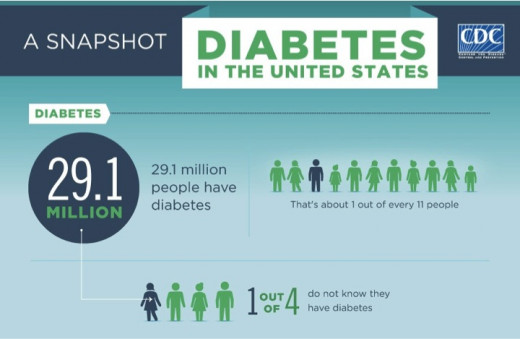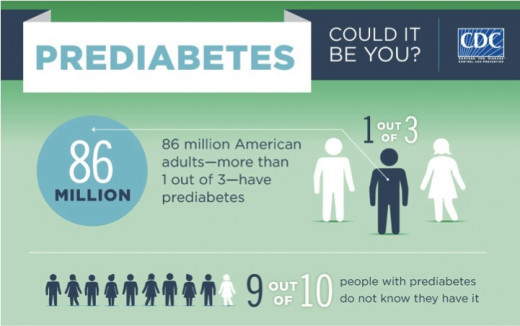The best type of exercise for people with Type II Diabetes (or pre-diabetes)


What is Type II Diabetes?
Type I diabetes used to be knows as "juvenile onset diabetes," and is characterized by the body's inability to produce the hormone insulin (to learn more about Type I diabetes, please click here).
Type II diabetes used to be known as "adult onset diabetes" because it was exclusively diagnosed in adults. However, mostly because of our current lifestyles which focus on poor diet and lack of exercise, Type II diabetes is now diagnosed in children as well.
Type II diabetes is characterized by the inability of the body to use the hormone insulin, such that blood sugar remains chronically elevated. Some common outcomes are:
1) the kidneys have to work much harder, leading to kidney failure
2) the arteries stiffen leading to cardiovascular disease or problems with eyesight
3) nerves become damaged leading to massive infections which require amputations
These are clearly very serious problems. About 30 million US adults currently have diabetes, and another 90 million have pre-diabetes (9 out of 10 people with pre-diabetes don't know that they have it). And even more scary is that about 1/4 of American children now have pre-diabetes.
How many people in your family have pre-diabetes or diabetes?
What is the best type of exercise?
An effective exercise program for a diabetes should achieve 4 goals:
- Reduce blood sugar over the long term (this article will use Hemoglobin A1c as a reference)
- Reduce belly fat (because it makes diabetes worse)
- Improve related health factors such as blood pressure and cholesterol
- Be safe!
Reducing Blood Sugar
For comparison purposes, taking the drug Metformin alone will reduce HbA1c by about 1.1% (Hirst, 2012).
Many studies have shown that the average change in HbA1c from exercise is about 0.3-0.5%. This appears disappointing, and may be why doctors are so quick to go with the medication.
However, when you look closely at the included studies, the average is misleading. Essentially, the harder the exercise program, the greater the results. Exercise programs that included weights and aerobic training together were about twice as effective. Interval training programs were also more effective than either aerobic or weight training programs alone. Long, supervised programs that required fairly heavy exercise worked the best, and compared favorably to drug treatment alone.
In a large study by Church et al. (2010) published in the Journal of the American Medical Association, they compared three difference exercise methods to standard care (drug therapy). The results so clearly showed that exercise improved blood sugar, that the ethical review board made the researchers give the standard care group the exercise training (see chart below). In short, it was deemed unethical not to give exercise training to people with diabetes!
Belly Fat (Visceral Fat)
Reducing belly fat for diabetics is important, because it will slow the progression of the disease and reduce risk for cardiovascular disease.
The typical drug treatment of Metformin appears to have no effect of belly fat.
Starting an exercise program has been shown to reduce body weight by 1-5 lbs in diabetics. However, oftentimes, people who start exercising increase the amount of muscle and decrease the amount of fat, so their body weight doesn't change that much. When we test for waist circumference instead to measure belly fat, we find large reductions of 1-4 inches, which makes a huge difference.
As with HbA1c, reviews of studies have found that programs that were longer, more strenuous, and supervised caused better improvements.
Cardiovascular Risk Factors
Diabetics are 2-3 times more likely to have heart disease than people without diabetes. Exercise has powerful effects on cardiovascular disease risk factors for people with diabetes. Numerous studies have found large reductions in blood pressure (over 10mmHg decrease for strenuous exercise). This is a greater change than you could expect from reducing your salt intake.
These studies have also found smaller reductions in LDL (the bad cholesterol) and increases in HDL (the good cholesterol).
Special Considerations
Exercise can be a very powerful tool for slowing the progression of diabetes, or reversing pre-diabetes. However, diabetics also have to be careful that the exercise does not exacerbate their symptoms. These special precautions should be taken before and during exercise:
- Consult a physician before starting a new exercise plan. Diabetes are at increased risk for cardiovascular events, so only your physician will be able to ensure that you can do it safely.
- Diabetics who also take Insulin should avoid exercise during peak insulin action to avoid causing hypoglycemia. They should also check blood glucose before, during, and several hours after exercise, and should avoid exercise right before bedtime. Just in case, they should also have a glucagon emergency kit and
glucose gel on hand.
- Diabetics may not feel sores on their feet because they may lose sensation. Therefore, to avoid sores and blisters, Diabetics should were comfortable shoes with plenty of room when working out. They should also check their feet before and after exercise to make sure there are no rocks in their shoes that might cause an infection.
- About 25% of Diabetics have diabetic retinopathy (at risk of blood vessel rupture in their eyes). If a diabetic has this disorder, they should avoid vigorous jumping exercises, and should make sure they breath during all weight training (no Valsalva maneuver).
Effects of Different Types of Exercise for Diabetics
HbA1c
| Weight
| HDL (good cholesterol)
| LDL (bad cholesterol)
| |
|---|---|---|---|---|
Weight Training
| -0.32%
| -1.5 lb
| +0.7 mg/dL
| -1.9 mg/dL
|
Aerobic Training
| -0.46%
| -2.0 lb
| +1.2 mg/dL
| -3.1 mg/dL
|
Interval Training
| -0.5%
| -4.6 lb
| +8.1 mg/dL
| -28.2 mg/dL
|
Metformin
| -1.1%
| none
| none
| none
|
Summary
- About 1/3 of US adults have diabetes or pre-diabetes
- About 1/4 of US children have pre-diabetes
- Exercise can prevent the progression of the disease
- Aerobic exercise is probably a bit better than weight training
- Combining both (like circuit training) is better than doing either individually
- Diabetics have several special considerations to implement during exercise
*Because 9 out of 10 people with pre-diabetes don't know they have it, most people should be tested for diabetes (or pre-diabetes) at their next physical.
*Before starting with drug treatment, diabetics should try exercise (and dietary changes) to stop diabetes progression.
For a good book to use as a reference, you may want to purchase Diabetes & Exercise.
Take Action
*** Because exercise can have the same (if not better) effect than drug therapy, and people do better with supervised training, US policy should be changed so that insurance companies and medicare cover the cost of certified personal trainers***
About the Author
Amerigo Rossi has a doctorate in Applied Exercise Physiology from Columbia University. He is a professor of Health and Exercise Science at Long Island University Brooklyn, with research focused on developing effective physical activity interventions for people at risk for diabetes.








